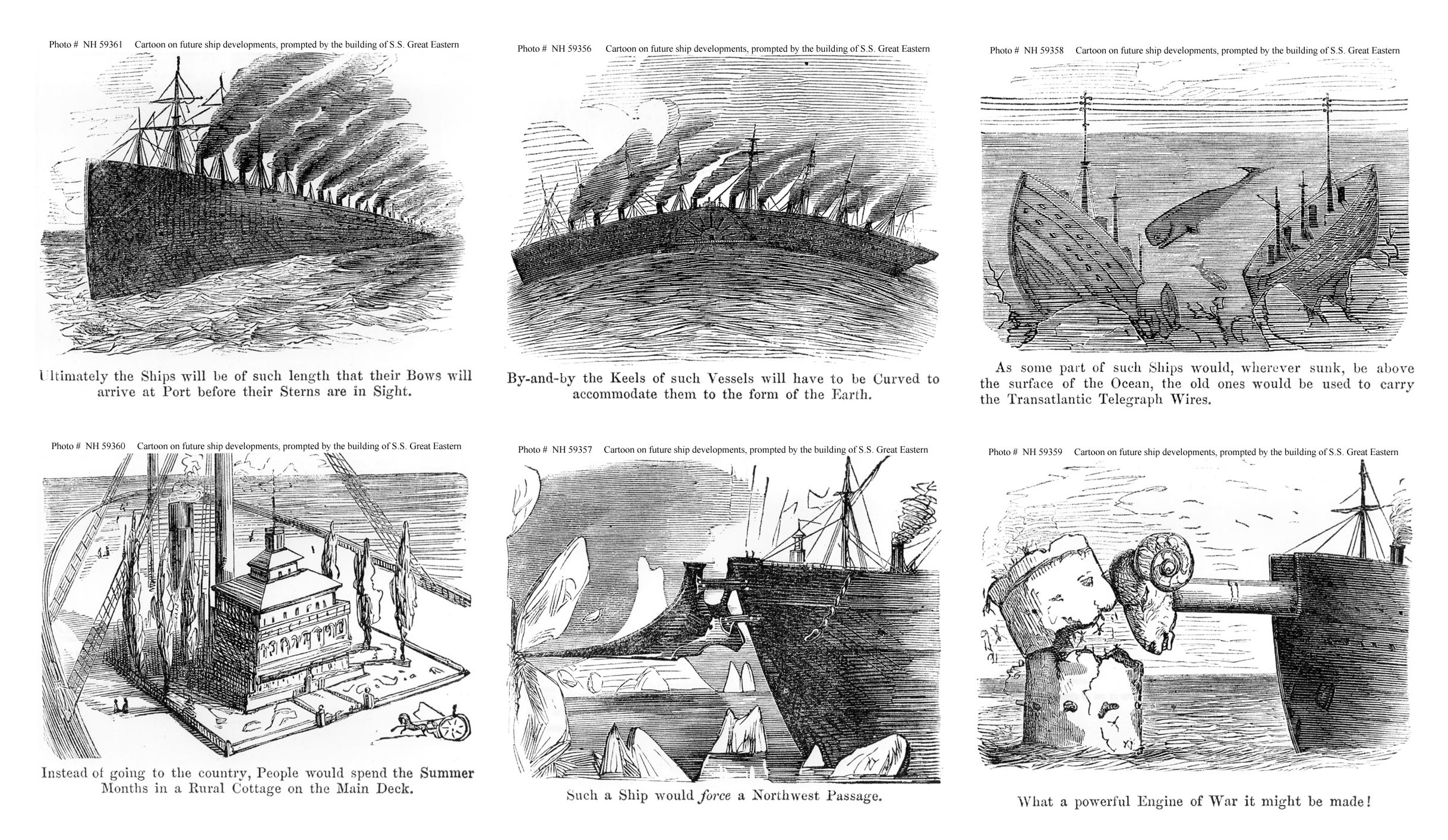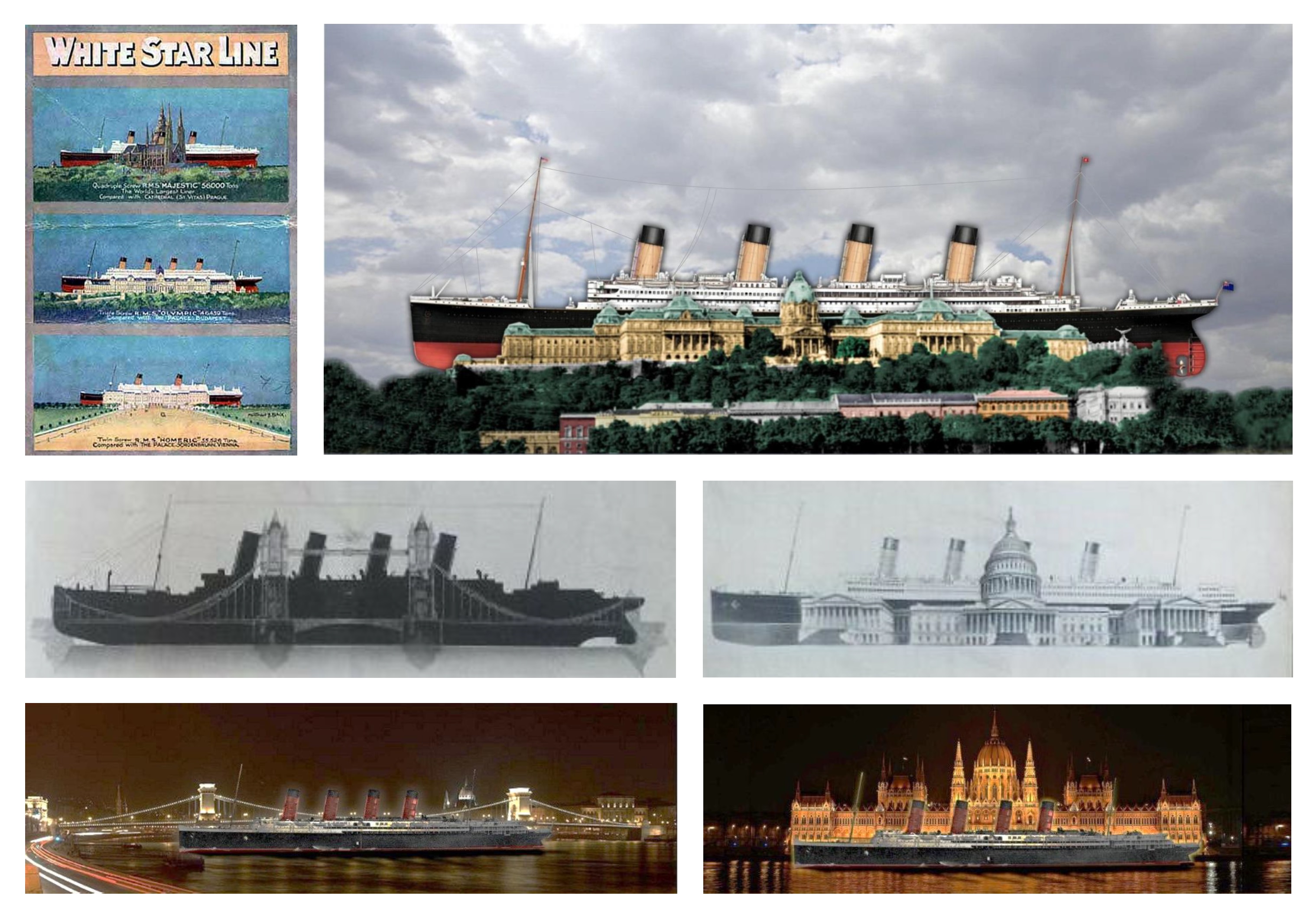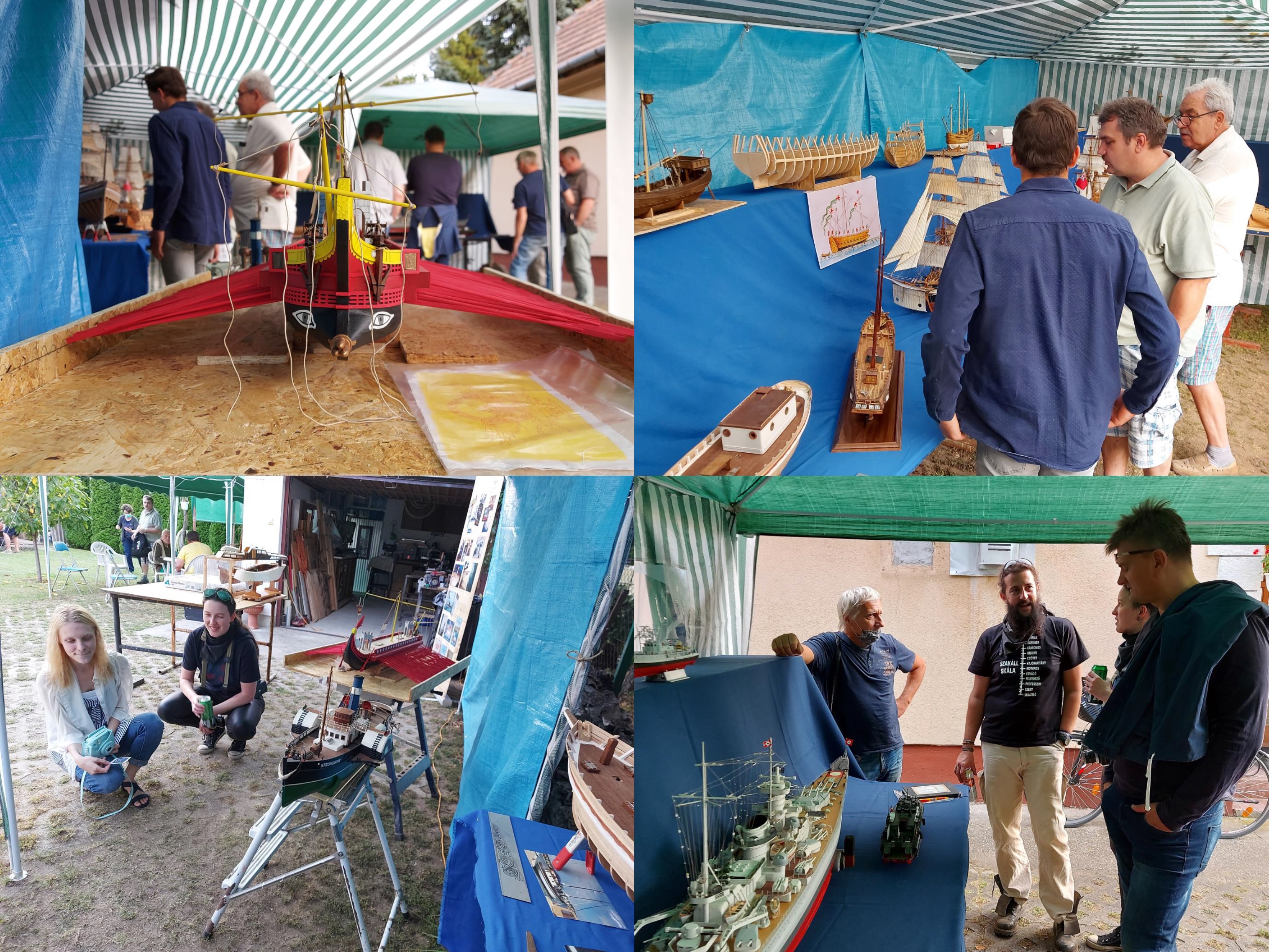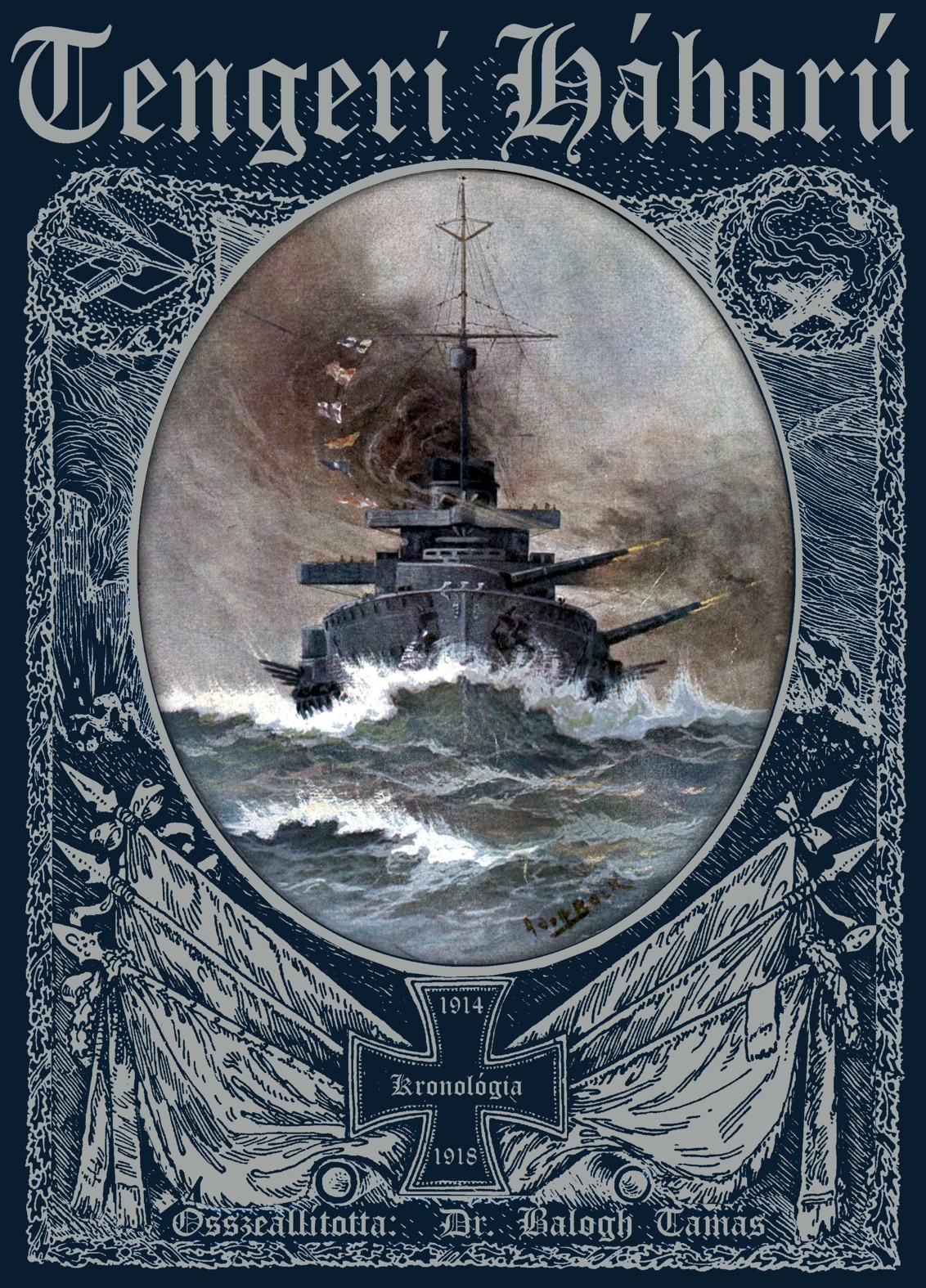Köztudott, hogy a hajók az emberiség által épített legnagyobb közlekedési eszközök. De vajon mekkora egy óceánjáró tulajdonképpen? Elvégre a hajók közt is vannak kisebbek, meg nagyobbak. Nos, az óceánjáró személyszállító hajók a nagytömegű ömlesztett árut szállító (pl.: tartály-) hajók és a konténerszállító hajók megjelenéséig, csaknem százhúsz éven át a földkerekség legnagyobb járműveinek számítottak: egy szárazföldi ember számára – akinek a legnagyobb közlekedési eszközt régebben legfeljebb a lovas kocsi, mostanában a kamion jelenti – szinte elképzelhetetlenül nagynak. Ennek ellenére természetesen az óceánjárók között is voltak (esetenként tekintélyes) méretkülönbségek. Ezekről az elképesztő méretekről és a kisebb-nagyobb különbségekről tájékoztattak az óceánjárókat – a szárazföldi emberek számára is ismert hétköznapi tárgyakkal összevetve – elképzelhetővé tevő összehasonlító ábrák, viszonyítások (comparisons), melyek a történelem első infógrafikáinak is tekinthetők. Ezek történetéből ad ízelítőt Dr. Balogh Tamás írása.

1.) A viszonyrajz, mint szemléltető ábrázolási mód kialakulása:
Nem tudjuk, hogy melyik a legeslegelső összehasonlító ábra, amely valaha is óceánjáróról készült. Mindenesetre a legelső óceánjáró, amelynek a méretei látványosan felülmúltak minden addigi elképzelést, a brit GREAT EASTERN (1858-1890) volt, amelyet Isambard Kingdom Brunel tervezett és John Scott Russel épített az ipari forradalom hajnalán. A hajó hatszorosan haladta meg az addigi legnagyobb vízi jármű – a szintén Brunel tervei alapján épült GREAT BRITAIN – vízkiszorítását, s szinte elképzelhetetlenül nagy volt a többi vízi járműhöz képest.

1. ábra: Isambard Kingdom Brunel három forradalmi jelentőségű hajójának méretarányos ábrázolása jól szemlélteti, hogy egyetlen ember életében mekkora fejlődésen ment át a hajóépítés (a képet Björn Landström rajzának felhasználásával készítette Dr. Balogh Tamás). A maga idején mindhárom hajó világrekorder volt. Tervezőjük – a tervek valóra váltásában közreműködő konstruktőrök segítségével – a modern óceánjárók atyjává, hajói pedig a ma ismert óceánjárók őseivé váltak.
A GREAT WESTERN (elöl balra) még fából épült. Az Atlanti-óceán gőzzel történő átszeléséhez (a vitorlák nem a meghajtást szolgálták, csak az iránytartást segítették) fel kellett építeni az akkori világ legnagyobb hajótestét annak érdekében, hogy elférjen benne a transzatlanti úthoz szükséges rengeteg szén. A meghajtáshoz fel kellett találni a felületi kondenzátort, amellyel a gőzgép gőze ismét üzemvízzé alakítható, ráadásul az addig készült legnagyobb kovácsoltvas lapátkerék-tengelyre is szükség volt a hatalmas hajótest szélességének áthidalásához (a megmunkálásához ezért egyúttal el kellett készíteni a világ addigi legnagyobb gőzkalapácsát is).
A GREAT BRITAIN (elöl jobbra) szintén kora legnagyobb hajója volt. Ez az első vastestű és az első, kizárólag hajócsavarral hajtott óceánjáró (a vitorlázat itt sem a meghajtást, csak az iránytartást szolgálta). A hajó úszóképességének az esetleges balesetek idején való biztosítására elsőként itt alkalmazták a nyomásálló válaszfalakkal egymástól vízmentesen elzárható légrekeszeket.
A GREAT EASTERN (a háttérben) pedig egyesítette magában mindazt a tudást, amit a hajótervezők és hajóépítők addig megszereztek. Ezzel együtt természetesen további újdonságokat is bevezetett: az első óceánjáró volt, amely kettős hajófenékkel és – részlegesen – kettős oldalfallal épült, így nemcsak kivételesen nagy, de (a beépített vízmentes rekeszekkel és vízzáró fedélzetekkel együtt) kivételesen biztonságos hajónak is számított.
A GREAT EASTERN volt a kor első számú műszaki szenzációja, amely egyszerre ébresztett csodálatot és keltett tartózkodó félelmet. Nem véletlen, hogy eredetileg a hatalmas bibliai tengeri szörny után LEVIATHAN névre keresztelték, s Jules Verne is „Egy úszó város” (Une Ville flottante) címmel írt regényt a fedélzetén átélt élmények hatására. Aligha tévedünk tehát, ha a GREAT EASTERN születésével összefüggésben keressük a később közkedveltté vált és széles körben elterjedt, óceánjárókról készült összehasonlító ábrák keletkezésének forrását.

2. ábra: Valószínűleg így kezdődött: a hajó hatalmas méretei először csak a róla készült festményeken biztosították az összehasonlítás lehetőségét a kor egyéb hajóival (Forrás: Weedon, Edwin: The Great Eastern pasing through the Downs, 1859. Science Museum, London).
A GREAT EASTERN, valamint a mellette eltörpülő hagyományos vitorlások és kezdetleges gőzhajók közötti tekintélyes méretkülönbség ugyanis feltűnő jelenség a hajóról készült minden egykorú ábrázoláson, és a korabeli sajtó figyelmét sem kerülte el. Elvégre minden alkatrésze olyan hihetetlenül nagy volt az addig megszokott méretekhez képest, hogy az már önmagában hátborzongató izgalmat keltett. A GREAT EASTERN hatalmas méretét és fejlett technológiáját így akkora érdeklődést övezte, hogy az építését kísérő optimizmus Európa után Amerikára is átragadt, ahol a hajó méreteiről szóló első közlések nyomán már az építése közben több karikatúra készült róla, amelyek a hajógyártás jövőjét illető találgatásokat öntötték humoros formába a helyi lapokban

3. ábra: A GREAT EASTERN építésének idejéből származó amerikai karikatúrák az összehasonlíthatóság számos lehetőségét kínálták. 1) A kikötőkkel, előre jelezve, hogy amikor befut a hajó orra, a tatja még nem is látható a horizonton (fent balra). 2) A Földdel, felhívva a figyelmet, hogy az ilyen hatalmas hajók gerincét már előre meghajlítva kell építeni, hogy igazodjanak a Földfelszín görbületéhez (fent középen). 3) A tengerek mélységével, biztosítva az olvasókat arról, hogy a modern hajók immár akkorák, hogy egyes részeik még az elsüllyedésük esetén is feltétlenül a vízfelszín fölé emelkedek majd, ami kiváló lehetőséget biztosít egyebek között arra is, hogy kifeszítsék közéjük a transzatlanti távírókábelt (fent jobbra). 4) Egy vidéki nyaralóval, jelezve, hogy ha egy kis kikapcsolódásra vágyik az ember, elég, ha kikocsizik a tatfedélzetre (lent balra). 5) A jéghegyekkel, biztosra véve, hogy ekkora hajóval akár az Északnyugati átjáró jégtorlaszain is keresztültörhetnek (lent középen). 6) A tengeri erődökkel, felhívva a figyelmet a hatalmas hajók katonai alkalmazásában rejlő lehetséges előnyökre (lent jobbra). (Forrás: S.S. Great Eastern – Contemporary Cartoons inspired by the Ship, Department of the Navy, Naval Historical Center)
Ezek az ábrázolások inkább viccesek, sőt gúnyosak. A hatalmas hajótestet ugyanis három hónapig még csak vízrebocsátani sem sikerült, ami elég okot adott az élcelődésre, mondván, hogy miért építenek akkor a hajót, amekkorát megmozdítani sem lehet. Ennek ellenére ezek az ábrázolások – amelyek a maguk korában talán valóban sokakat mosolyra fakasztottak – furcsa mód szinte látnoki módon jövendölték meg mindazt, amit végül is bekövetkezett:
1) A GREAT EASTERN óriási üzleti bukáshoz vezetett, többek között azért, mert az egész világon nem volt akkora kikötő, amelyik képes lett volna befogadni a hatalmas hajót. A kikötői infrastruktúrák látványos bővítése épp a hajó által megjövendölt fejlődésre tekintettel vette kezdetét a világon.
2) Bár az óceánjárók soha nem nőhettek akkorára, hogy átérjék a Földet, a széljárástól független gőzhajtású óceánjáró-flottákkal kiépült menetrendi hajójáratok mégis behálózták azt, az egész bolygón megteremtve a kiszámítható, biztonságos és rendszeres transzkontinentális közlekedés lehetőségét.
3) Az üzemeltető hajótársaság csődje után a GREAT EASTERN első gazdaságos kihasználására épp az Európa és Amerika közötti transzatlanti távírókábel lefektetése idején nyílt először lehetőség. Ezt a munkát a hatalmas befogadóképességű hajó nélkül – amely egyszerre vehette fel a fedélzetére a két kontinens közötti távot áthidaló teljes kábelmennyiséget – lehetetlen lett volna elvégezni.
4) A palota-szerű nyári lak ábrázolása is a későbbi valóságot vetítette előre, hiszen a hatalmas óceánjárókat nemcsak nagyra, erősre és gyorsra építették, de az utasok által a szárazföldön megszokott és a tengeren is igényelt kényelemmel szintén felszerelték. Verne „úszó városa” még csak a fedélzetre vehető emberek számára utalt. Hamarosan azonban az is nyilvánvalóvá vált, hogy e városnyi ember elér a hajón csaknem minden szolgáltatást, mint amit a kisvárosokban nyújtani tudnak. Mi több: az is kiderült, hogy az első osztályon utazók elhelyezésére szolgáló helyiségek egy főúri lak, vagy egy első osztályú szálloda pazar berendezésével vetekednek. Az addigi „úszó városok” ekkor „úszó palotákká” is váltak.
5) Utólag visszatekintve a jég említése is meghökkentő. Bár addig is történtek a jéggel összefüggő hajó-balesetek, a GREAT EASTERN-hez hasonló hatalmas hajókról azonban senki sem feltételezte, hogy ilyen balesetek áldozatává válthatnának. Sőt, igazság szerint még azt sem hitték el, hogy akár csak a nyílt óceáni hullámzást komolyan megérezhetnék azok, akik egy ekkora hajó fedélzetén tartózkodnak (amíg a GREAT EASTERN erős viharban tapasztalt imbolygása bizonyítékkal nem szolgált az ellenkezőjére, jó időre elriasztva tőle az utasokat). A jéghegynek ütközve elsüllyedt TITANIC katasztrófája kellett ahhoz, hogy a hatalmas hajók sebezhetetlenségébe vetett töretlen bizalom nagyobb óvatosságra intsen a tervezés, az építés és az üzemeltetés terén egyaránt.
6) Végül az óceánjárók katonai alkalmazásával összefüggő jóslat is beigazolódott: a hatalmas befogadóképességű, a menetrendet az időjárási viszontagságokkal dacolva is betartani képes, erős és gyors hajókat előszeretettel használták fel hadseregek transzóceáni bevetésére). Feltűntek a Brit Birodalom különböző konfliktusaiban Dél-Afrikától Indiáig és Kínáig. Harcoltak a spanyol-amerikai gyarmati háborúban, az első és a második világháborúban, sőt, még a koreai háborúban is. Jelentőségüket jól mutatja, hogy a QUEEN MARY és a QUEEN ELIZABETH óceánjárók 1940-1945 között összesen 2 200 000 katonát szállítottak, ezzel Churchill szerint két évvel rövidítették meg a második világháborút.
A karikatúrák jövendőmondása nem csoda, hiszen a GREAT EASTERN-ben a jövő öltött testet. A távoli jövő: tervezőjének és alkotóinak forradalmi jelentőségű újításai annyira megelőzték a saját korukat, hogy kerek 40 éven át nem épült olyan hajó, amely akár csak megközelíthette volna a GREAT EASTERN méreteit. Az első óceánjáró, amelyik hosszabb volt nála, 1898-ban épült (R.M.S. OCEANIC II), az első, amelynek nagyobb volt a térfogata is, pedig csak 1901-ben (R.M.S. CELTIC). Mindez szinte magától értetődő módon vezetett oda, hogy a XIX. században minden új hajót valamiképpen összehasonlítottak a GREAT EASTERN-nel is, amiként tervezőik és építőik is a nagy elődökéhez mérték a saját teljesítményüket. Ezzel tulajdonképpen meg is született a viszonyítások (comparisons) grafikus műfaja, amely lényegében napjainkig változatlan formában fennmaradt.
4. ábra: A GREAT EASTERN (1858) és az OCEANIC II. (1898) hosszát összehasonlító ábra 1899-ből. Az OCEANIC II-t tervező és építő belfasti Harland & Wolff Hajógyár, s a tulajdonos White Star Line hajótársaság büszkén hirdette, hogy elsőként nekik sikerült az, ami negyven éve senkinek: először építettek a fenséges GREAT EASTERN-nél nagyobb hajót, amely anyagi haszonnal, gazdaságosan üzemeltethető. (Forrás: „Scientific American” 1900. March 31.)

5. ábra: Az OCEANIC II. gépészete. A képek felirata: „Tizenhat gőzmozdony termel annyi lóerőt, amennyit az OCEANIC, miközben óránként 22 mérföldes sebességgel halad.” „Az OCEANIC ugyanilyen sebességgel történő vontatásához nyolc gőzmozdonyra lenne szükség.” „Az OCEANIC tömege megegyezik két, egyenként 433 kocsiból álló, három mérföld hosszú vasúti szerelvényével.” (Forrás: „Scientific American” 1900. March 31.)
II.) A viszonyrajz, mint a reklám eszköze – az ábrázolás elterjedése és főbb típusai:
A négy évtizeden át túlszárnyalhatatlannak tűnő teljesítmény, a GREAT EASTERN meghaladása után a viszonyításokban rejlő reklám-lehetőség már a kereskedelmi „háború” fegyvertárába tartozó eszközzé vált az új és még újabb hajócsodák alkotói közötti versenyben. Ennek köszönhetően a XIX. század második felében már általános reklámfogásnak számított az óceánjárók rendkívüli kapacitásának széles-körű megismertetésére alkalmazott összehasonlító infógrafikák használata. Ezek már nem annyira a GREAT EASTERN-nel, sokkal inkább egymással hasonlították össze az új óceánjárókat. Szintén bevett megoldásnak számított az, hogy a kor ismert nagy-méretű szárazföldi építményeivel – az egyiptomi piramisokkal, amerikai felhőkarcolókkal, esetleg különböző városrészekkel – vagy a kortárs hajók helyett épp a megelőző korok híres hajóival vetették össze az új óceánjárók méretét, így szemléltetve a változást, a technikai haladást és a műszaki kiválóságot. A lenyűgözőnek szánt ábráktól nemcsak az általános lelkesedés felébresztését, de a tengerentúli utazásra készülők jegyvásárlásban megnyilvánuló nagyon is konkrét érdeklődésének és bizalmának megnyerését is elvárták.

6. ábra: Az OCEANIC II (a felső sorban). A KAISER WILHELM der GROßE, a KAISER WILHELM II és az IMPERATOR (a második sorban). A LUSITANIA, az OLYMPIC és a TITANIC (a harmadik sorban). A QUEEN MARY, a QUEEN MARY II és a DISNEY (az alsó sorban). (Forrás: Dr. Balogh Tamás, Library of Congress, Mariner's Museum, „New York Tribune”, 1910. November 27., valamint egyéb gyűjtemények és források.)
II.1. Az óceánjárókat egymással összehasonlító viszonyrajzok: Míg az angolok gyakran hasonlították össze egymással a hajóikat (így érzékeltetve a folyamatos fejlődést), addig a német társaságok – elsősorban a méretre helyezve a hangsúlyt – inkább épületekhez viszonyítottak (talán azért, mert a német hagyományosan szárazföldi, nem pedig tengerésznép).

7. ábra: Brit óceánjárók méretének érzékeltetése más hajókkal összehasonlítva (forrás).

8. ábra: Német óceánjárók a városi látképben: 1) az s.s. AMERIKA (1905-1957) a hamburgi városházával. 2) Az s.s. KAISERIN AUGUSTE VICTOIRIA (1905-1930) a New York-i Park Row épülettel. 3) Az s.s. KIASER WILHELM der GROßE (1897-1914) a manhattani Szentháromság-templom (Trinity Church), a New York-i Saint Paul épület (1895-1958), és a washingtoni Washington-emlékmű obeliszkje, s a Capitolium kupolája mellett. 4) Végül az s.s. IMPREATOR (1912-1946) a New York-i Woolworth-épület mellett (forrás).

9. ábra: Brit óceánjárók a városi látképben – TITANIC és MAURETANIA: A TITANIC mellett: 1) a bostoni Bunker Hill emlékmű, 2) a philadelphiai Középület, 3) a Washington-emlékmű, 4) a New York-i Metropolitan-torony, 5) és a Woolworth-épület, 6) a kölni katedrális, 7) a gízai nagy piramis, 8) a római Szent Péter bazilika. A kép ikonográfiája is beszédes: az Ó- és az Újvilág nevezetességeit a hajó köti össze.A másik közismert képet Jay henry Mowbray tervezte, eredetileg az OLYMPIC számára. Később a TITANIC esetében is alkalmazták, a BRITANNIC (ex-GIGANTIC) esetében azonban már nem (forrás). A másik kép - amely az R.M.S. MAURETÁNIA hosszát hasonlítja össze a New York -i felhőkarcolókkal, az Eiffel-toronnyal és más híres épületek magasságával - a "Scientific American" c. amerikai folyóiratban jelent meg az 1920 -as években.

10. ábra: A QUEEN MARY óceánjáró, s az Ó- és az Újvilág csodái. A képen egyértelmű a TITANIC hasonló reklámjának hatása (forrás).
A marketing fejlődésével az ábrázolásmód is változott. Az óceánjárók egy-egy jellemző tulajdonságát kiemelő plakát-szerű (esetleg sokszorosítva képeslapokon értékesített) ábrázolások helyébe az első világháborút közvetlenül megelőző években a hajók és a társaságok ajándékboltjaiban forgalmazott tematikus brosúrák léptek, amelyek a legkülönbözőbb szempontok szerinti összehasonlítás lehetőségét kínálták.

11. ábra: A QUEEN MARY öröksége, a QUEEN MARY II. óceánjárót bemutató viszonyrajzon, amelyen szintén kimutatható a TITANIC-reklám hatása, noha ezen a képen – a MAURETANIA-reklámhoz hasonlóan – keverednek a különböző világrészeken álló épületek (forrás).
II.2. Az óceánjárókat híres épületekkel összehasonlító viszonyrajzok: A hajókat épületekkel összehasonlító német gyakorlat tipikus példája a KAISER WILHELM II. (1902-1940) nevű óceánjárót – a legutoljára épült, kizárólag dugattyús gőzgéppel hajtott óceánjárót – ábrázoló, hazai „fogyasztásra” szánt (sokszorosítva képeslapokon is forgalomba hozott) viszonyrajz-sorozat, amely német városokban mutatja a hajót, így a sorozat segítségével a helyi lakosok könnyen fogalmat alkothattak a hajó méreteiről, összehasonlítva azt lakóhelyük közismert részleteivel.

12. ábra: Német viszonyrajzok – a KAISER WILHELM II. Németország és Európa városaiban (Források: 1., 2., 3., 4., 5., 6., 7., 8.).
Érdekesség, hogy ez az ábrázolásmód a második világháború kitöréséig fennmaradt és több német óceánjáró – pl. az ALBERT BALLIN (1922-1945) és a COLUMBUS (1922-1939) – esetében is alkalmazták.

13. ábra: Az első világháború előtti német viszonyítási gyakorlat alkalmazása a híres HAPAG hajótársaságnak a háború után készült első új építésű óceánjárója, az ALBERT BALLIN esetében, amely a hamburgi Jungfernstieg-en, a Hansa-korabeli történelmi városmag folyóparti sétányán ábrázolja a hajót (forrás).

14. ábra: A COLUMBUS – 1924-ben a legnagyobb német óceánjáró – méreteit érzékeltető összehasonlító ábra, amely a tradicionális módon, a berni Kornhaus-hídra helyezve ábrázolja a hajót, érzékeltetve annak hosszát (forrás).
II.3. Az óceánjárókat híres történelmi hajókkal összehasonlító viszonyrajzok: A híres történelmi hajókhoz való viszonyítás gyakori példája egy-egy óceánjáró és a SANTA MARIA, Kolumbusz híres hajója közötti összehasonlító ábrázolás. Ezekben az esetekben – amikor elég volt az összehasonlítás során csupán egyetlen szempontot kiemelni – alkalom nyílt rá, hogy az ábrázolás igényesebb, olykor művészi kivitelű legyen. Ez a helyzet a spanyol megrendelésre Skóciában épült óceánjáró, az ALFONSO XIII. (1888-1915) esetében is, amelyet büszke tulajdonosa, a Compagñia Transatlantica Española hajótársaság megrendelésére a XV. századi karavellával együtt festettek meg.
A téma visszatért a COLUMBUS 1924-es első útja alkalmából készített reklámanyagokon is, ahol az 1492-es és az 1924-es utazás évét jelző számsor számjegyeinek azonosságát – és a két utazást lebonyolító hajó közötti látványos méretkülönbséget – használták fel az első világháború utáni legnagyobb német óceánjáró szolgálatba állításának ünneplésére. Ugyancsak feltűnik a SANTA MARIA a brit QUEEN MARY óceánjáró 1936-os avató útja alkalmából kiadott reklámfüzetben is, amelyben már a hajó műszaki jellemzőinek egész sorát szemléltették látványos összehasonlító ábrák segítségével.

15. ábra: Az ALFONSO XIII spanyol óceánjáró és a SANTA MARIA karavella összehasonlítását ábrázoló 1888-as festmény (forrás).

16. ábra: A COLUMBUS német óceánjáró és a SANTA MARIA összehasonlítását ábrázoló 1924-es festmény (forrás: Hans Bohrdt)

17. ábra: A QUEEN MARY és a mellette haladó BRITANNIA – a Cunard Line első hajója – kíséretében szintén feltűnnek Kolumbusz hajói (forrás).
A történelmi hajókkal való összehasonlítás szép példája a transzóceáni személyszállítás háromszáz éves fejlődését áttekintő 1920-ban készült tabló, amely az R.M.S. AQUITANIA (1913-1950) óceánjárót hasonlítja össze a MAYFLOWER (1620) vitorlással és a BRITANNIA (1840) gőzössel, a Cunard Line első óceánjárójával. A tabló ún.: robbantott képként mutatja be az ábrázolt hajókat, bepillantást engedve az utasok elhelyezését szolgáló belső terekbe is, ezzel is hangsúlyozva, hogy a műszaki fejlődés révén nemcsak az óceáni átkelés ideje csökkent, de a kényelme és a szállítható utasok száma is jelentősen növekedett.

18. ábra: Az óceáni személyszállítás fejlődésének háromszáz éve, 1620-1920 (forrás: Cecil J Allen, John R Hind: My Book of Ships, 1920.).
A két világháború közötti időszak más érdekességeket is tartogat, hiszen a brit hajótársaságok fokozták reklámtevékenységüket a közép-európai régióban, ahol az Osztrák-Magyar Monarchia és tengerhajózása összeomlása után csak külföldi társaságok hajóin lehetett utazni. Mivel a régióban korábban domináns német hatás érvényesült, a brit White Star Line is német mintájú – a hajókat ismert épületekkel összehasonlító – viszonyrajzokkal szemléltette óceánjárói méreteit a Monarchia utódállamaiban élők számára.

19.-20., 21.-22., 23.-24. ábra: A két világháború közötti időszak ábrázolásai és modern utánérzéseik: Fent balra a MAJESTIC (1914-1943) és a prágai Szent Vitus székesegyház, az OLYMPIC (1910-1935) és a budai királyi palota, s a HOMERIC (1913-1938) és a bécsi Schönbrunn. Mellette az. R.M.S. TITANIC méreteinek összehasonlítása a budai királyi palotával (Forrás: Dr. Balogh Tamás). A középső sorban az R.M.S. AQUITANIA 1920-as évekből származó összehasonlítása a londoni Tower híddal és a washingtoni Kapitóliummal. Lent jobbra az előző két kép modern utánérzése: az R.M.S. LUSITANIA összehasonlítása a budapesti Lánchíddal és az Országgyűléssel (Forrás: Dr. Balogh Tamás).
III.) Különleges viszonyrajzok:
Az összehasonlítást szolgáló viszonyrajzok önálló típusát alkotják azok, amelyek az óceánjárók üzemeltetéséhez szükséges erőforrások mennyiségét szemléltetik az olvasókat elkápráztató, látványos csoportosításban. A tematikus brosúrák elterjedését követően többé nem volt szükség arra, hogy az ábrázolás feladatát egyetlen képen valósítsák meg, mivel egy-egy viszonyrajz-füzet jellegzetességenként külön-külön szemléltető ábrát tartalmazott. Ezért különösen érdekesek azok, a szemléltető brosúrák elterjedése előtti időszakban készült ábrázolások, amelyek még egyetlen ábrán igyekeztek megjeleníteni a lehető legtöbb tulajdonságot. Ezek közé tartoznak az s.s. DEUTSCHLAND (1900-1925) német, és az R.M.S. TITANIC (1911-1912) brit óceánjáróról készült amerikai infógrafikák.
A DEUTSCHLAND-ról készült rajz a hajó ellátásához szükséges készletek hatalmas mennyiségét mutatja. Ebből kiderült, hogy a hajón tartózkodó 1 100 utas ellátása az ötnapos Atlanti-óceáni átkelés alatt 6 000 font (2 800 kg) baromfi-, 1 200 font (550 kg) bárány-, 2 200 font (1 000 kg) ürü-, 13 000 font (6 000 kg) marha-, 1 200 font (550 kg) borjú-, 900 font (400 kg) sertéshúst (+ 600 font – 300 kg – sonkát) igényelt. Ezen felül 400 tonna ivóvizet és 40 tonna jeget, 3 000 üveg és 375 hordó sört, 2 200 gallon (9 900 liter) tejet, 300 gallon (1 350 liter) tejszínt, 1 200 font (550 kg) vajat, 1 700 doboz tojást, 350 font (160 kg) élesztőt, 175 hordó krumplit, paradicsomot és zöldséget, 8 500 font (3 900 kg) friss gyümölcsöt, 14 hordó osztrigát és kagylót, 1 700 font (770 kg) halat és 1 000 doboz (1 400 liter) jégkrémet, a hajó ellátására pedig 5 000 tonna szenet vittek magukkal.
A TITANIC-ról készült rajz ehhez képest a hajóról az elsüllyedése előtt készült kevés hasonló ábrázolás egyike. Fő témája az óceánjáró kikötői infrastruktúra átalakítását igénylő rendkívüli méreteinek bemutatása, több érzékletes viszonyítással: a kép jelzi például, hogy a TITANIC olyan széles, mint, amilyen hosszú a HALVE MAEN (a Hudson-folyó torkolatát 1609-ben holland szolgálatban felfedező Henry Hudson hajója), a sétafedélzete pedig olyan hosszú, hogy azon háromszor is elférne a Robert Fulton alkotta legelső gőzhajó, a CLERONT (1807-1814), vagy akár egy teljes személyvonat, miközben a magassága a hajógerinctől a négy óriás kémény tetejéig egy 13 emeletes ház magasságával vetekszik.

25., 26. ábra: Balra az s.s. DEUTSCHLAND készletei (forrás: Scientific American, 1901. June 29.), jobbra pedig az R.M.S. TITANIC méretei (forrás: New York Tribune, 1910. November 27.).
IV.) Az óceánjárókról készült viszonyrajzok mai alkalmazása:
A QUEEN MARY II. óceánjáró 2003-ban történt vízrebocsátásakor a Cunard Line reprezentatív brosúrát készített, amelyben a nagy előd, a QUEEN MARY vízrebocsátásakor kiadott viszonyrajz-füzet ikonikussá vált ábrázolásai ihlette képekbe az új óceánjárót helyettesítették be (lásd a 11. ábrán). Ezzel az óceánjáró-viszonyrajzok visszatértek. Hiszen a kiadvány sikere nyomán az óceánjárót és a kirándulóhajókat üzemeltető hajótársaságok újra fantáziát kezdtek látni a hajóik méretét hirdető viszonyrajz-füzetek értékesítésében, ugyanúgy, mint az 1900-as évek elején.

27, 28. és 29., 30. ábra: Fent a QUEEN MARY-t és a Hercules H-4 (1947), Howard Hughes „Luclúd” nevű óriás-hidroplánját összehasonlító viszonyrajz (forrás) és modern megfelelője, melyen a QUEEN MARY (II) látható egy Airbus A-380 (2005) típusú repülő, a világ jelenlegi legnagyobb utasszállító gépe hátterében (forrás). Lent balra a QUEEN MARY, a QUEEN ELIZABETH 2 és a QUEEN MARY II (forrás) illetve lent jobbra az R.M.S. TITANIC és a QUEEN MARY II összehasonlítása, mely utóbbi ábrán is feltűnik az A-380-as, egy autóbusz, egy személyautó és egy gyalogos társaságában (forrás).
Az új ábrázolásokban feltűnő, hogy mára a TITANIC vette át azt a szerepet, amit korábban a GREAT EASTERN töltött be: a hajózás és a technika történetének olyan általánosan ismert és közérdeklődést keltő ikonja, hogy ma már szinte minden hajót összehasonlítanak vele.

31. ábra: A hajóépítés száz év alatt elért fejlődését meggyőzően mutatja a fenti ábra: a mai legnagyobb hajó tömege csaknem ötszörösen múlja felül a száz évvel korábbiét (az OASIS tömege 220 000 tonna, a TITANIC-é 46 328 tonna volt). (Forrás)

32. ábra: A TITANIC látványos összehasonlítása a USS RONALD REAGAN (2001) nukleáris meghajtású amerikai repülőgép-hordozóval (forrás).
A hajótársaságok által megrendelt viszonyrajzok kereskedelmi célú felhasználása mellett ugyanakkor megfigyelhető egy másfajta használat is, mégpedig az óceánjárókért rajongók közösségeiben. Ügyes kezű grafikusok ugyanis önmaguk és az óceánjárók szerelmeseinek szórakoztatására olykor elkészítik egy-egy híres eredeti viszonyrajz modern másolatát, vagy továbbfejlesztett átdolgozását, ami – a korszerű digitális grafikai eszközöknek köszönhetően – még tovább fokozza az ábrázolással elérhető vizuális élményt.

33. és 34. ábra: A TITANIC elsüllyedéséről világszerte beszámolt a sajtó. Az illusztrált lapok a hajó méreteit az olvasóik számára ismerős épületekkel összehasonlító látványos viszonyrajzokkal szemléltették a katasztrófa nagyságát. Az „Excelsior” c. francia képes újság 1912. április 19-i számában megjelent viszonyrajzot aztán – képeslap formájában – sokszorosították is (fent balra). Ezt dolgozta át a francia Cyril Codus, s mutatta be a TITANIC, Artifacts – The Exhibition 2013-as párizsi bemutatójára (forrás).
Hasonlóan készült el 2016-ban az a viszonyrajz, amely a TITANIC és a HINDENBURG léghajó méreteit hasonlítja összes, s amelyet a „Popular Mechanics” (Népszerű mechanika) c. amerikai lap 1936. augusztusi számában megjelent ábrázolás ihletett, amelyen a léghajó a QUEEN MARY óceánjáróval „méretkezett”.

35. és 36. ábra: A QEEN MARY, a HINDENBURG és a TITANIC viszonyrajzai (forrás: Popular Mechanics, 1936. Augusztus). Az utóbbi képen a léghajónak a Max Pinucci, az óceánjárónak pedig a Michael Brady által rajzolt képe látható (forrás).

37. ábra: A modern digitális viszonyrajzok egy kiváló példája (Forrás: Michael Brady).

38. ábra: Az ALFONSO XIII és a SANTA MARIA méretkülönbségét ábrázoló jellegrajz, az 1888-ban készült eredeti (lásd a 15. ábrán) remake-je (forrás: Dr. Balogh Tamás).

39. ábra: Tisztelgés. a GREAT WESTERN és a GREAT EASTERN – Isambard Kingdom Brunel első és utolsó óceánjárói – valamint a TITANIC méreteit összehasonlító viszonyrajz (forrás: Dr. Balogh Tamás).
Az óceánjárókról készült viszonyrajzok ekként fennmaradva továbbra is betöltik ismeretterjesztő funkciójukat, s érdekes vizuális élményt kínálva járulnak hozzá az óceánjárók jobb megismeréséhez.
Nagyszerű, ha tetszik a cikk és a benne megosztott képek. Ha érdeklik a szerző munkái, az Encyclopedia of Ocean Liners Fb-oldalán találhat további információkat a szerzőről és munkásságáról.
A képek megosztása esetén, a bejegyzésben mindig tüntesse fel az alkotó nevét. Köszönöm!




























Utolsó kommentek